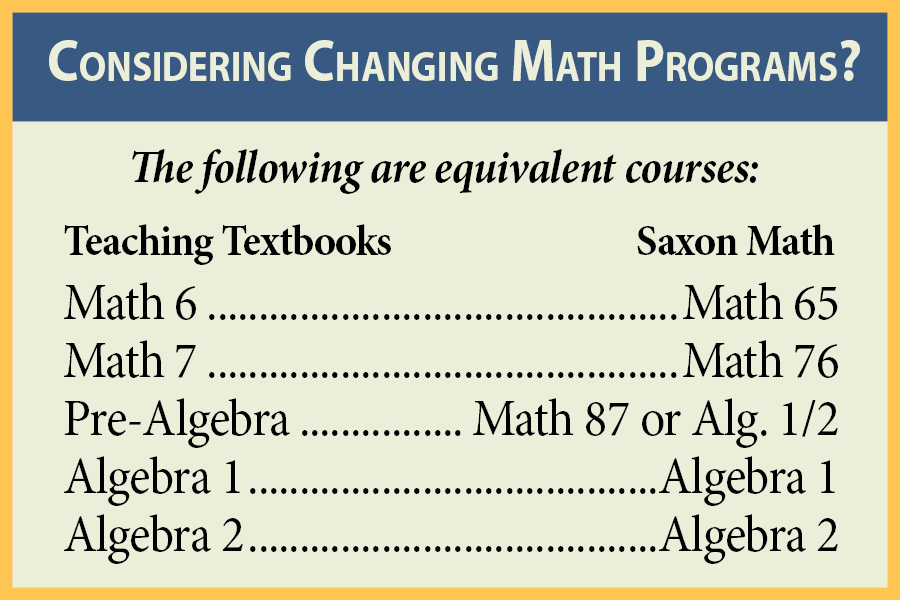Summary
Getting yourself organized for the new school year will help teacher and student get the most from their efforts. We gathered the best tips for you.We just got our curriculum boxes. What do we do first?
First, go through your box with the packing list that came with it and make sure you have everything!
Some moms write the grade level in which the books are used on the book spine or cover – especially helpful with book report books!
Many families put the lesson plans in a binder, but see the next question for other ideas on what to do with them.
Finally, visit your MySeton account and take a look at the resources available for the various subjects in each grade. You can access your MySeton account from the top right-hand corner of the Seton website.
What’s the best way to organize my Lesson Plans?
If you think you will be looking at the lesson plans frequently, as opposed to downloading and printing out personalized lesson plans, make sure they are in a nice, sturdy binder.
I suggest a large binder for the lesson plans and a smaller one for the answer keys. Color-code them by child, and you can tell at a glance which one you need.
A pocket folder for quarter report forms and tests, divided by quarter, will help too.
Some parents organize everything as they want and take it to a copy shop and have it spiral bound. It might cost around $5-$10 but it is easier to handle than the big binders. Some parents organize each subject separately in smaller binders, with lesson plans, tests, answer keys, all together by subject.
When do we start? When are the deadlines for turning in our work?
As to when you start and when you turn things in, that is entirely up to you! Seton lesson plans are scheduled to run for four 9-week quarters. However, it’s up to you when you want to start, and if you want to stick with that 9 weeks, or if you want to double up some of the review work at the beginning, or take extra time to finish a quarter.
When you enroll, you have a full calendar year plus two months to finish – how you spend that time is up to you. Some moms do year-round school, taking short breaks between quarters; others get it done by working consistently, breaking only for holidays and vacations. Flexibility is one of the main reasons many people begin homeschooling in the first place!
Do I need to rewrite the lesson plans for my children or give them my copy?
If you have young elementary students, you could write the page numbers of the books they had to do for each day in the Teacher Plan Book. If there are longer assignments, you might write something like “work on paragraph; see Lesson Plan week 5 day 1” and they will know to check their lesson plan binder.
The children can work with their planner and check things off as they finish them. When the column is all checked off, they are done!
If your students are older, you might want to use the automatic lesson plan generator. Details on the next page.
That will give you printed lesson plans that you can highlight so your child knows what they need to do, and they can check it off after it is completed. This could work for 5th-8th graders. You can also generate a weekly lesson plan and do the same highlighting or you can edit it so that it only shows what they need to do.
How can I decide between Teaching Textbooks and Saxon Math?
This is a question we get often, and understandably so! The two programs are actually quite different. Seton has been using the Saxon math program for grades 6 and up for many years. However, last year, because Saxon’s hard cover textbooks book became more difficult to come by, the curriculum and math departments at Seton chose to make Teaching Textbooks their new default Math course for grades 6 and up.
However, if you have the Saxon book you may still choose Saxon. Another option is to choose the soft cover Saxon Home Study Kits which remain available.
Which one to choose is up to you and your family’s learning style. The Saxon program is done with a textbook, and the Teaching Textbooks program is done on a computer. There is also a big difference in philosophy between the two programs. The Saxon books have many small easy lessons—the student learns one small thing at a time, and then practices that and what was taught before it. It is called an incremental approach.
Teaching Textbooks has a more traditional mastery approach—the student studies multiplication, for example, then moves on to another concept. Of course there are periodic reviews of previously learned concepts.
TT is online with the concepts taught through animations and voice-overs. When a problem is presented to students, they input the answer online, and it tells them immediately if their answer is right or wrong. If wrong, it gives them another opportunity to try. This immediate feedback helps reinforce the concepts leading to greater understanding. TT is done on the computer, but once downloaded, you don’t have to be online to use it.
Saxon does offer the opportunity to purchase additional CDs to help explain the lessons, but these do not have the same level of interaction that the TT software has. Both programs have optional parent-graded tests (in TT, it’s actually graded by the program). There are also required Seton-graded tests to be turned in.

 Seton Magazine Catholic Homeschool Articles, Advice & Resources
Seton Magazine Catholic Homeschool Articles, Advice & Resources

